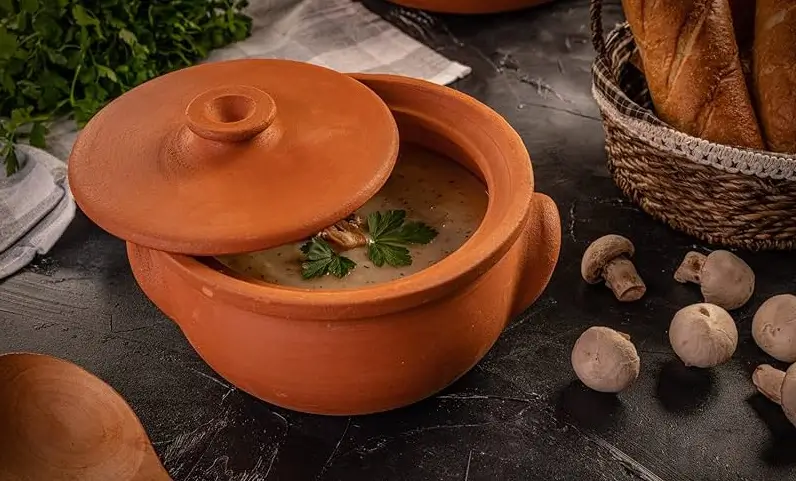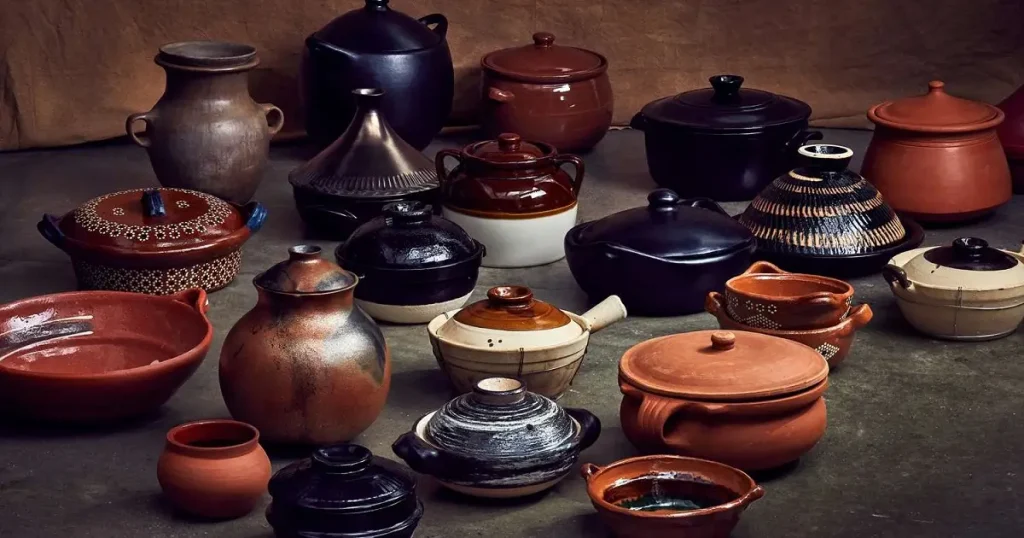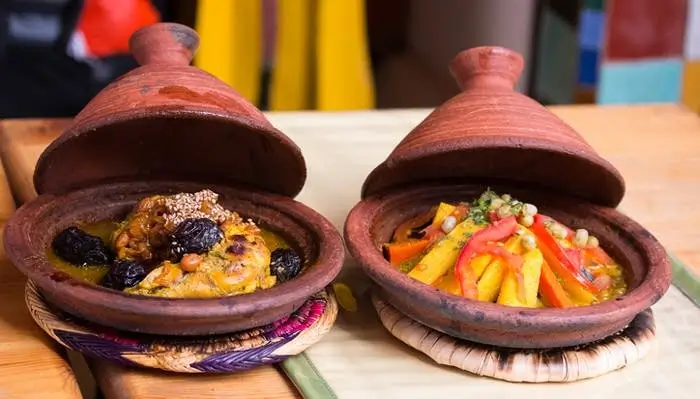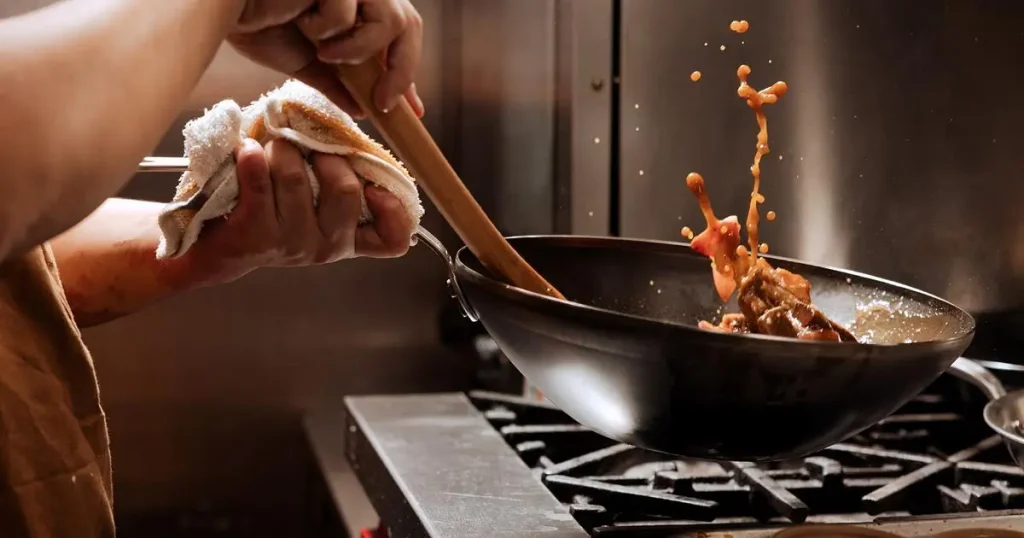Step into the world of clay-pot cooking and prepare to be enchanted by its age-old magic! Something is mesmerizing about how this humble earthenware can transform ordinary ingredients into extraordinary culinary creations. From tender meats that melt in your mouth to aromatic rice dishes bursting with flavor, clay pot cooking has captivated taste buds for centuries. But what sets this ancient cooking method apart?
What Is Clay Pot
A clay pot is a container made from clay or terracotta, a type of earthenware. It is typically used for cooking, storing food, or for decorative purposes. Clay pots have been used for centuries in various cultures worldwide due to their ability to withstand high temperatures and distribute heat evenly.
Clay pots are usually made by shaping and molding clay into the desired form, which is then dried and fired in a kiln to harden the clay. This firing process makes the pot durable and resistant to heat. The porous nature of clay allows for moisture and heat to circulate within the pot during cooking, resulting in even cooking and enhanced flavors.
In cooking, clay pots are commonly used for slow cooking methods, such as simmering, stewing, or braising. They are known for their ability to retain moisture and cook food evenly, which can lead to tender and flavorful dishes. Clay pots are often used for preparing traditional dishes like clay pot rice, clay pot chicken, or clay pot curry.
This traditional way of cooking involves using a clay vessel or pot placed over an open fire or stove, allowing the food to be cooked slowly and evenly. Using clay pots has stood the test of time because it offers numerous benefits regarding taste, nutrition, and convenience.

Clay Pots’ History & Origins
The history of clay pot cooking can be traced back to ancient civilizations, where people used earthenware vessels to cook food over open fires.
One of the earliest records of clay pot cooking can be found in Chinese history, dating back to around 5000 BC. The Chinese were among the first to develop techniques for shaping and firing pottery, making it an essential tool for their daily cooking needs. Claypots were also commonly used by other ancient cultures, such as the Greeks, Romans, and Egyptians.
In these early times, clay pots were not just used for cooking but also had cultural significance. Offering sacrifices or gifts in clay vessels was a familiar ritual across many cultures. It was believed that the porous nature of the clay absorbed negative energy from the sacrificial animal or object, purifying it before presenting it to the gods.
Claypot cooking gained popularity during medieval times when open-fire stoves became a common household item. Due to its ability to retain heat efficiently, food cooked in a clay pot would stay warm for more extended periods compared to traditional metal cookware.
During this period, different regions developed their unique styles of clay pot cooking. In Japan, the clay pot was used to make traditional dishes like rice and hot pot stews. In Morocco, the tagine pot was used to cook flavorful, slow-cooked meat and vegetable dishes.
In Southeast Asia, clay pot cooking became an essential part of many cuisines such as Chinese, Vietnamese, and Thai. The use of different herbs, spices, and sauces in these dishes, combined with the porous nature of the clay pots, created rich and complex flavors that are still enjoyed today.
Today, clay pot cooking is still widely practiced all over the world. While modern kitchen appliances have made cooking more convenient and accessible, many still prefer using clay pots for their unique taste and ability to retain heat. It has also become popular among health-conscious individuals as it does not require added oil or fats for cooking.
In addition to its practical uses in cooking, clay pots also hold cultural significance in many parts of the world. They are often used for special occasions or ceremonies, symbolizing tradition and heritage.
Types of Claypots
There are various types of clay pots available on the market, each with its unique features and characteristics. Some popular styles include:
- Unglazed Clay Pot. This is the most traditional type of clay pot made from unglazed clay. It has a rough surface that helps to create a crispy texture on foods cooked in it.
- Glazed Clay Pot. This type of clay pot is coated with a layer of glaze that makes it non-porous, making it easier to clean and maintain.
- Seasoned Clay Pot. Like cast iron skillets, seasoned clay pots require oiling and heating before use to create a natural, non-stick cooking surface.
- Flameproof Clay Pot. These pots are designed for stovetop cooking and withstand high temperatures without cracking or breaking.
Benefits of Cooking with a Clay Pot
Cooking with a clay pot is an ancient method that different cultures have used for centuries. This traditional way of cooking has gained popularity in recent times due to its numerous benefits. From imparting unique flavors to promoting healthy cooking, there are several advantages to using a clay pot in your kitchen.
- Enhanced Flavor and Aroma
One of the most significant benefits of cooking with a clay pot is the enhanced flavor and aroma it imparts to food. The porous nature of clay allows for slow and even heat distribution, resulting in perfectly cooked dishes with rich, deep flavors. The steam inside the pot while cooking keeps food moist and tender, making it more flavorful.
- Retains Nutrients
Clay pots are known for their ability to retain nutrients while cooking. Unlike metal or ceramic cookware, which can leach minerals and vitamins from food, clay pots do not react chemically with ingredients. This ensures that your cooked meals retain nutritional value, making them healthier.
- Natural Non-Stick Properties
Another advantage of using a clay pot is its natural non-stick properties. As the pot heats slowly and evenly, food does not stick or burn easily. This means you can cook with minimal oil or fat, making your meals healthier without compromising taste.
- Versatility
Clay pots are incredibly versatile and can be used for various cooking methods, including boiling, braising, steaming, and baking. They can also be used on heat sources such as stovetops, ovens, and open fires. This versatility makes them a valuable addition to any kitchen.
- Healthy Cooking
Cooking with a clay pot is healthier than other cookware materials such as aluminum or Teflon. As mentioned earlier, clay pots do not leach chemicals into food and retain nutrients, making them a better option for health-conscious individuals.
- Eco-Friendly
Clay pots are made from natural materials and are entirely eco-friendly. They do not require any chemical coating or glazes, making them a safe and sustainable choice for cooking.
- Long-Lasting
With proper care, clay pots can last for many years without losing their effectiveness. Unlike metal cookware that can rust or ceramic cookware that can chip or crack easily, clay pots are durable and can withstand high temperatures without getting damaged.
It’s important to note that using a clay pot requires some care and attention. Clay pots should be seasoned before use and handled carefully to avoid breakage. Additionally, they may require longer cooking times compared to other cookware materials. However, the unique benefits and flavors that clay pots offer make them a popular choice for many cooking enthusiasts.

How Does a Claypot Affect the Taste and Texture of Food
The use of clay pots in cooking dates back centuries and has been an essential part of traditional cuisines in many cultures. These humble yet versatile vessels are made from natural clay and have been praised for their ability to enhance the taste and texture of food. But how exactly does a claypot affect the final result of a dish?
Firstly, the clay pot is made from porous material, allowing moisture and heat to circulate evenly during cooking. As the food cooks, steam is released from within the pot, creating a moist environment that prevents food from drying out. This not only results in juicier and more succulent dishes but also helps to retain nutrients.
Another critical factor is its ability to distribute heat evenly. The gradual release of heat ensures that food is cooked at a constant temperature, preventing hot spots that can lead to unevenly cooked meals. This gentle cooking method helps proteins break down slowly, resulting in tender meat and vegetables with rich flavors.
Moreover, due to its porous nature, a layer of crust forms on the inside surface of the clay pot as it heats up during cooking. This natural glaze acts as insulation and helps trap moisture within the pot while imparting subtle earthy flavors to the food. The longer the pot is used, the thicker and more flavorful this glaze makes each dish cooked even more delicious than the last.
Tips for Caring and Maintaining Your Clay Pot
Caring for your clay pot ensures its longevity and optimal cooking performance. Here are some tips on how to properly care for and maintain your clay pot:
- Seasoning your clay pot
Before using your new clay pot, it is important to season it. This process involves soaking the pot in water for at least 30 minutes, then filling it with water and bringing it to a boil on the stove. Once boiled, remove from heat and let cool before discarding the water. This will help to open up the pores of the clay and prevent food from sticking.
- Avoid sudden temperature changes
Clay pots are sensitive to sudden changes in temperature, so avoid placing them directly into a hot oven or onto a hot stovetop without gradually increasing the temperature first. Also, do not place a cold claypot directly into the fridge, which can cause cracks.
- Handle with care
Clay pots can be fragile, so handle them carefully when moving or cleaning them. Avoid dropping or banging them against hard surfaces, leading to cracks or breakage.
- Cleaning
After use, allow the clay pot to cool down completely before washing it with warm water and mild soap. Do not use abrasive cleaners or scouring pads, as they can damage the pot’s surface.
- Drying
Always ensure your clay pot is completely dry before storing it away. Trapped moisture can cause mold growth and weaken the integrity of the pot.
- Storing
When not in use, store your clay pot in a cool and dry place. If stacking multiple pots together, place a soft cloth or paper towel between each pot to prevent scratches or damage.
- Re-seasoning
Over time, the seasoning on your clay pot may wear off. To maintain its non-stick surface, you can re-season it by following the same process as when you first seasoned it.
- Using on the stovetop
Clay pots are designed for use on low to medium heat only. High heat can cause the pot to crack or break.
- Avoid metal utensils
To prevent scratching the surface of your clay pot, use wooden or silicone utensils instead of metal ones.
- Use regularly
The more you use your clay pot, the better its cooking performance will be. Regular use also helps to strengthen and maintain its non-stick surface.
By following these tips, you can ensure that your clay pot remains in good condition and provides delicious meals for years.

Embrace the Magic of Clay Pot
Clay pot cooking is a traditional and time-tested method used for centuries by different cultures worldwide. From Chinese to Indian, Mexican to Mediterranean, clay pots have been an integral part of various cuisines.
Not only does claypot cooking add a unique flavor and aroma to dishes, but it also has numerous health benefits. The porous nature of the clay allows for slow and even heat distribution, which helps retain nutrients in food. This makes it an ideal choice for those looking to cook healthier meals without compromising taste.
Furthermore, cooking in a claypot requires less oil than other cooking methods, such as frying or sautéing. This results in lighter and more wholesome meals that are not only delicious but also good for your body.
Apart from its functional benefits, there is also an element of magic associated with claypot cooking. The earthy smell that emanates from the pot while it’s being cooked on low flame gives a sense of warmth and comfort. The natural properties of the clay enhance the flavors of the ingredients, making every dish a delight to savor.
Embracing the magic of claypot cooking means staying with modern cooking methods. It simply means incorporating this traditional technique into our kitchen routine and reaping its benefits. So, next time you’re in the mood for a hearty and healthy meal, consider reaching for a clay pot and experience the magic of clay yourself.

